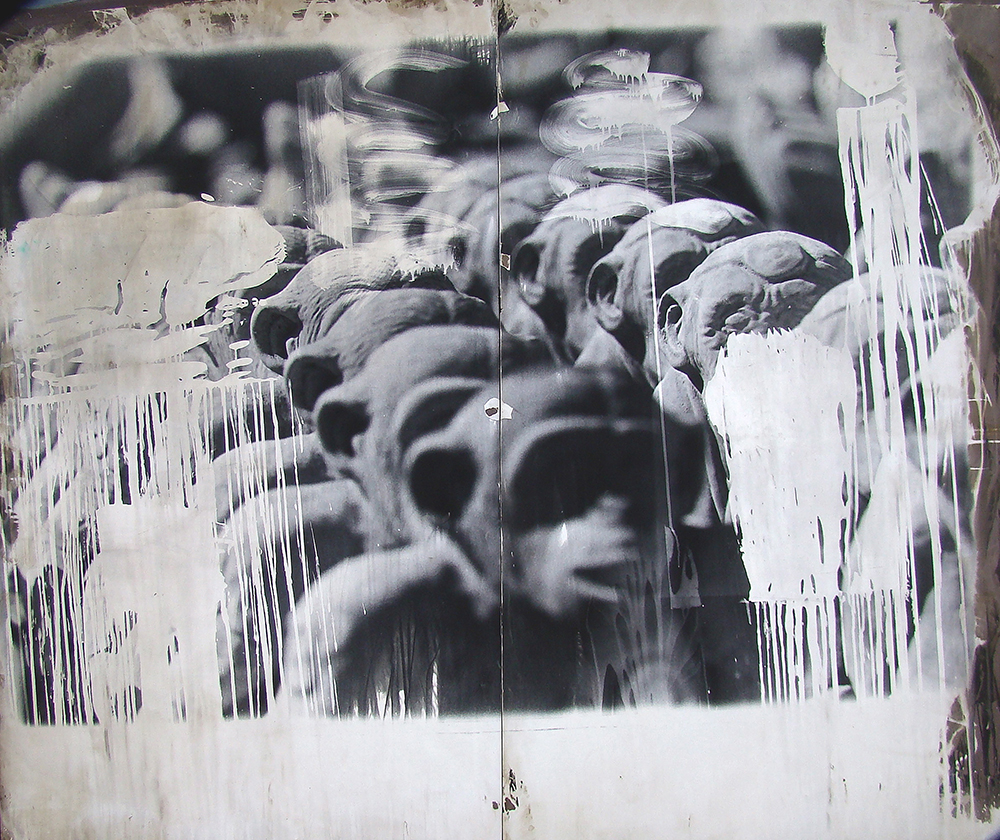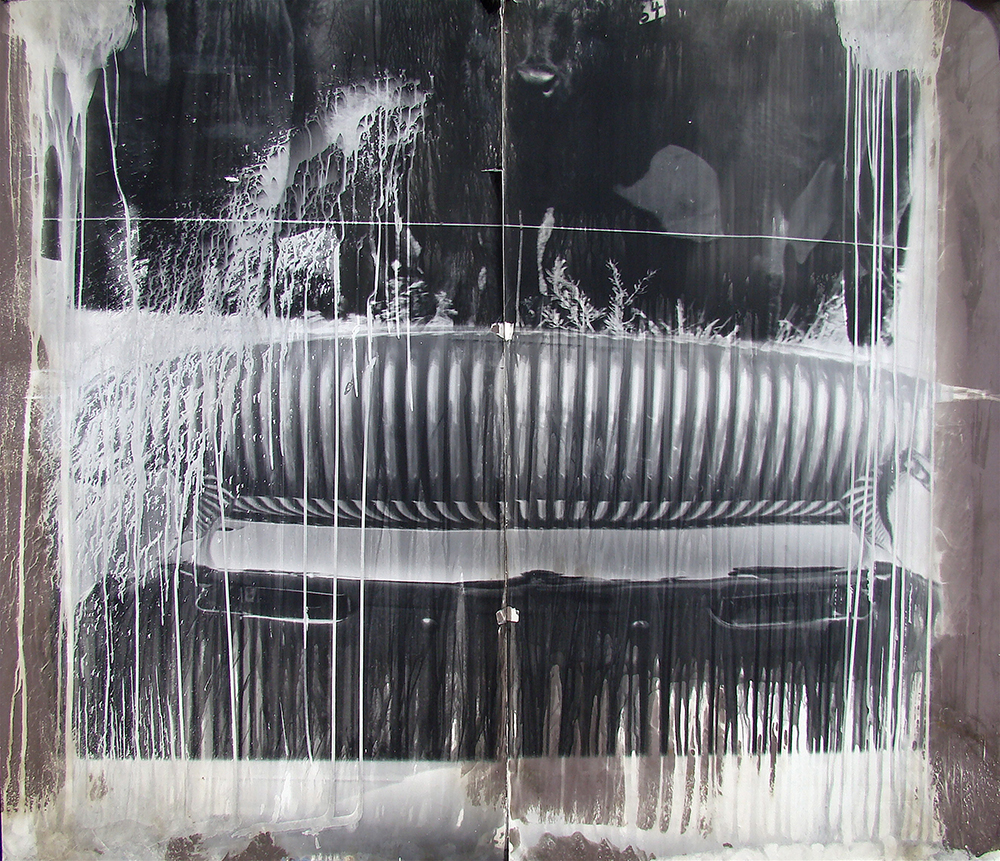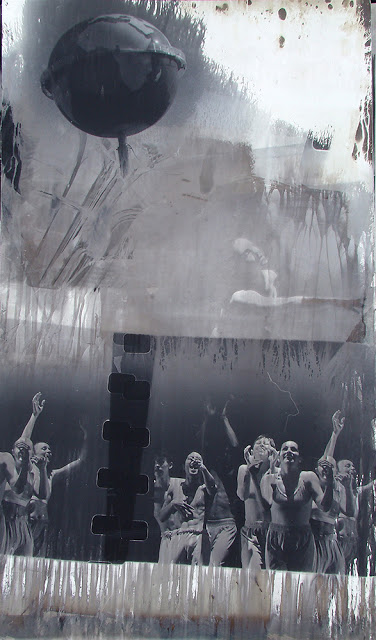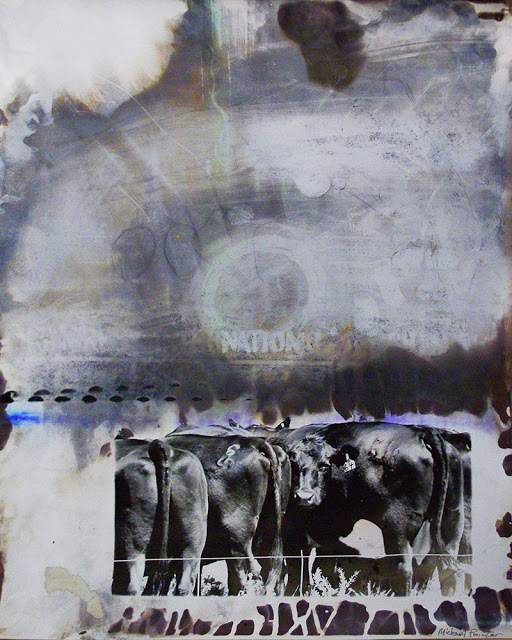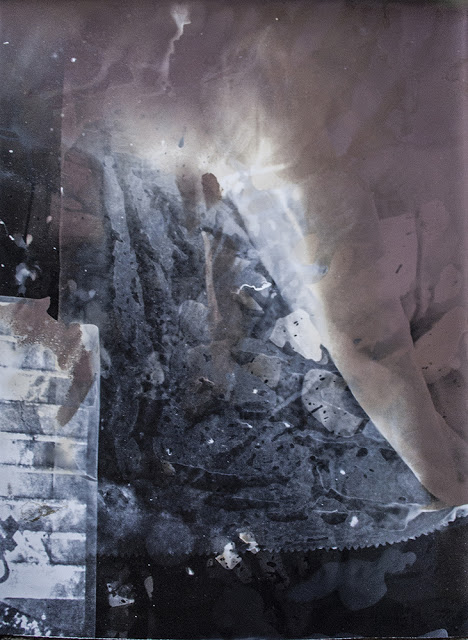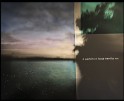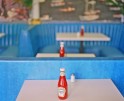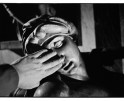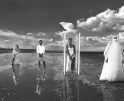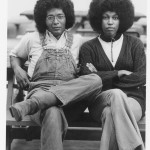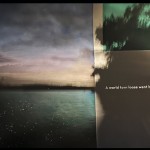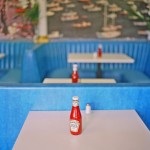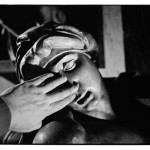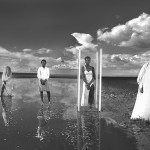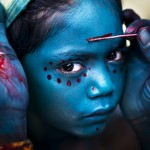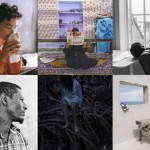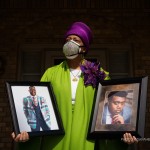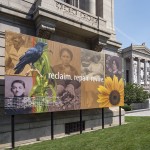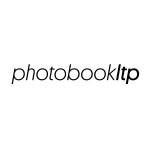Canteen Magazine’s Naked Jurying: Michael Pointer
Photographer Michael Pointer was the 4th Runner Up in Canteen’s Naked Judging contest. The work he presented was unusual, cooked up in the darkroom like a chef, mixing in ingredients and ideas to create a new way of looking a photographs. Michael is a fourth generation artist, his father is a painter and grew up drawing and painting. His interest in literature and creative writing led a BA in English with an emphasis on Creative Writing. He uses poetry as the vehicle to begin the formation of visual ideas and establishing an emotional template to refer to while he works on a series of images. Michael was a Lecturer of Photography at Wichita State University School of Art and Design and most recently lived in Kabul, Afghanistan providing dental laboratory support for a free clinic and taking dental treatment into imprisoned Afghan women and their children. He is currently on the CCAA Advisory Board.
The body of work could have garnered more impact if the judges had read his statement and understood his process and point of view. For those who don’t think the artist statement should matter, I think Michael’s project is a perfect example of why they do. I, for one, feel that an artist’s statement can make or break a body of work–it can fill in the blanks, give us a deeper understanding of what we are looking at and what the photographer has gone through to create the work. What frustrated Michael was that the judges hadn’t understood his processes, that he was working with darkroom chemistry, not using a paintbrush or pencil.
Comments from First Round Jurors:
I like the use of alternative processing, and it’s a very strong group of images. Consistently holds my interest. Looks a bit like the beginning of “American Horror Story.” Forwarded.
Photoexpressionism
This work (gelatin silver monotype prints) explores the boundaries and relationship between photography and painting. I produce photo based images that are anchored in the reality of photography with the extended metaphor of painting. I want the viewer to be aware of the surface of the photographic paper, the same as paint on canvas. The work is an invitation to look for the larger ideas within the image. The viewer shares the presence of the photographer and the geography, the structure of evidence. The physical reaction to presence with two degrees of separation, the camera/photographer/film to print to viewer, an apostolic chain of touch, one hand to the next. So gelatin silver paper becomes my canvas, evidence of me. My work attempts to expand the creative territory within analog photography. I begin the process by writing a series of poems which become an emotional template for reference while I work on a series. The resulting images are not illustrations of the poetry and I don’t usually publish the poetry with the images.
Posts on Lenscratch may not be reproduced without the permission of the Lenscratch staff and the photographer.
Recommended
-
2023 in the Rear View MirrorDecember 31st, 2023
-
The 2023 Lenscratch Staff Favorite ThingsDecember 30th, 2023
-
Inner Vision: Photography by Blind Artists: The Heart of Photography by Douglas McCullohDecember 17th, 2023
-
Black Women Photographers : Community At The CoreNovember 16th, 2023



